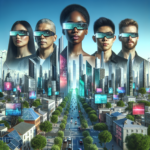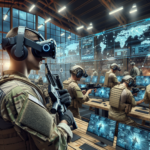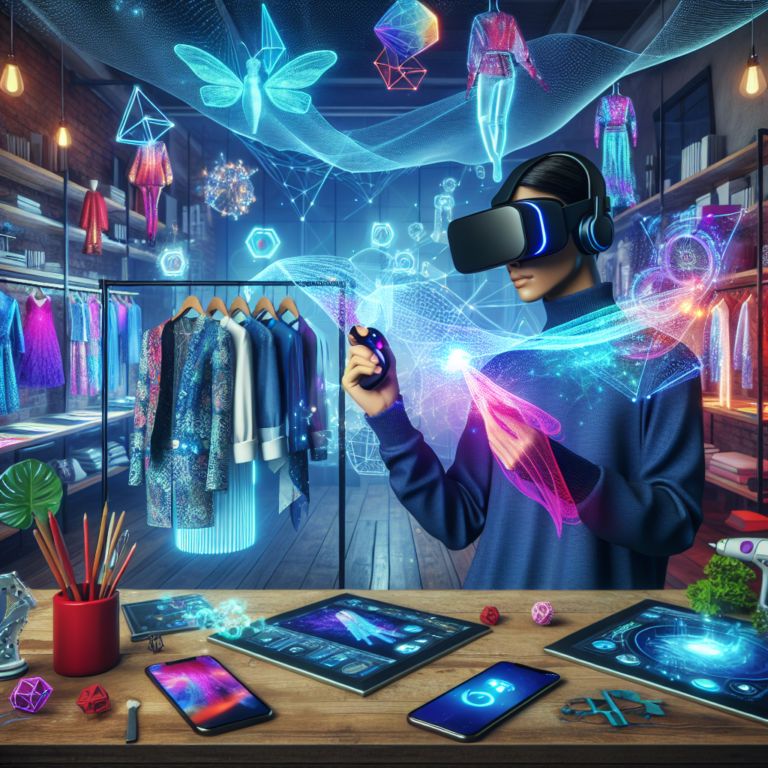The Stylish Shift: Immersive Technologies Transforming Fashion Design
Introduction: Welcome to the Future of Fashion
The fashion industry is undergoing a spectacular metamorphosis as immersive technologies pave the way for innovative design solutions. 🚀 As traditional methods struggle to keep pace with the rapidly evolving landscape, designers are turning to virtual reality (VR), augmented reality (AR), and other cutting-edge tech to revolutionize how we create, experience, and consume fashion. Join us on this voyage as we explore how these transformative technologies are reshaping the world of fashion!
The Technology Behind the Trend
Virtual Reality (VR): Immersive Fashion Technology Stepping Into Another World
Imagine being able to step into a digital realm where you can manipulate fabrics, visualize patterns, and create garments without the limitations of physical space. VR offers designers a unique opportunity to experiment in a risk-free environment. This technology allows for:
- Immersive Prototyping: Designers can create virtual dress fittings, allowing them to visualize and tweak designs before they hit the production stage.
- Enhanced Collaboration: Teams from all over the globe can collaborate in a shared virtual space, breaking down geographical barriers.
- Emotional Engagement: Consumers can experience brand storytelling through immersive experiences, fostering a deeper connection to the brand.
Augmented Reality (AR): Transforming Retail Experiences
AR is bridging the gap between the digital and physical worlds, revolutionizing how consumers interact with fashion. With the help of smartphones and AR apps, customers can try on clothes virtually before making a purchase. This technology offers:
- Virtual Try-Ons: Customers can see how a piece of clothing looks on them without ever setting foot in a store!
- Interactive Catalogs: Imagine flipping through a fashion magazine and seeing the clothes come to life on your device!
- Better Size and Fit: AR tools can provide detailed size recommendations, reducing the rate of returns.
The Impact on Design Processes
Streamlined Design Workflows
Immersive technologies are not just enhancing the consumer experience; they are also streamlining the design workflow for creators. With 3D modeling and simulation tools, designers can visualize their concepts quickly and efficiently. Benefits include:
- Time Efficiency: Rapid prototyping means designers can go from concept to creation faster than ever before.
- Cost Reduction: Saving on materials and labor by testing designs in a virtual environment before production.
- Creative Freedom: Digital tools allow designers to experiment with bold ideas they might not have the means to execute physically.
Sustainable Fashion: Tech for a Greener Future
The fashion industry is notorious for its environmental impact. However, immersive technologies are helping to pave the way for sustainable practices. By employing digital tools, brands can reduce waste through:
- Virtual Sampling: Eliminating the need for physical samples can drastically reduce fabric waste.
- Supply Chain Transparency: Using AR and VR to showcase sustainable materials and manufacturing processes.
- Consumer Awareness: Immersive experiences can educate consumers on the importance of sustainability, encouraging conscious purchases.
Transforming the Runway Experience
Virtual Fashion Shows
The COVID-19 pandemic accelerated the shift toward virtual fashion shows, allowing brands to reach global audiences without the constraints of time and location. These virtual showcases feature stunning visuals and innovative presentations, making the runway experience:
- Accessible: Audiences worldwide can attend shows from the comfort of their homes.
- Interactive: Viewers can click to purchase items directly from the virtual runway.
- Inclusive: Diverse representations and innovative storytelling can be incorporated, reaching various demographics.
Personalized Customer Experiences
With immersive technologies, personalization is taken to the next level. Brands are leveraging AI and AR to tailor shopping experiences based on individual preferences. This leads to:
- Targeted Recommendations: Sophisticated algorithms analyze patterns to suggest items tailored to individual tastes.
- Engaging Interactions: Brands can create interactive ads and experiences that take customer engagement up a notch.
- Behavioral Insights: Immersive tech allows designers to gather valuable data from customer interactions, informing future designs.
The Challenges Ahead
Technological Barriers
While the future looks bright, there are challenges to overcome. Not all brands have access to cutting-edge technologies, which can be a barrier to entry for smaller players in the industry. Additionally, staying updated with the latest tech trends can be resource-intensive. Brands must consider:
- Investment Costs: The initial financial outlay for high-tech tools can be daunting.
- Learning Curve: Designers must be trained to effectively utilize these new technologies.
- Data Privacy: As tech evolves, protecting customer data becomes increasingly crucial.
Final Thoughts: Embracing a Tech-Infused Fashion World
The fusion of fashion and technology is set to redefine our relationship with clothing and design. Immersive technologies provide an exciting avenue for creativity, sustainability, and consumer engagement. As we move forward, we can expect to see fashion evolve into a digitally-enhanced experience that resonates with the modern consumer. So buckle up, because the future of fashion is looking more vibrant and inclusive than ever! 🌈




0 Comments